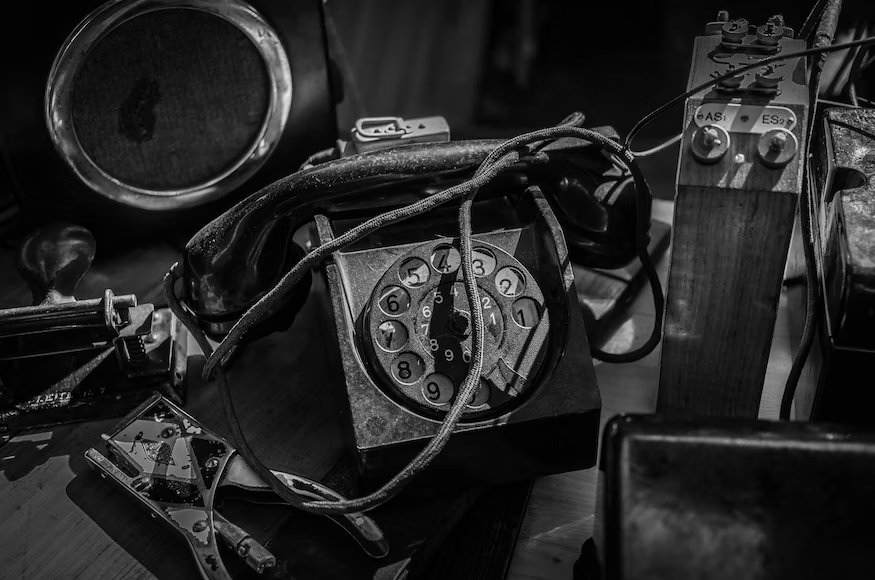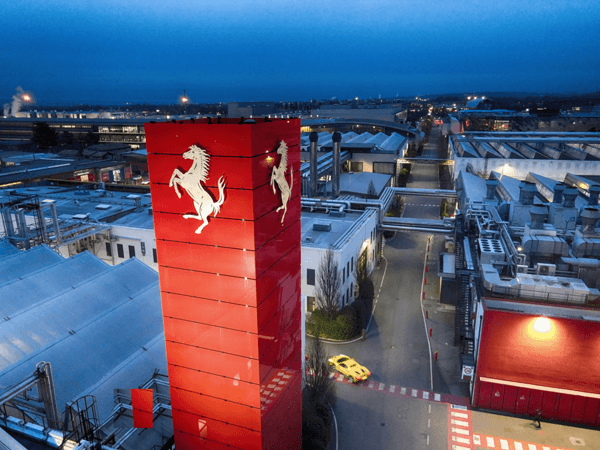Apple has officially become the first $1 trillion company in history! It must come as no surprise as Apple continues to astonish the world with its innovative products and services.
The company had to go through years of struggle, various failures and accomplishments which finally led to the way it stands today – the first ever company to be valued $1 trillion
Apple आधिकारिक तौर पर इतिहास की पहली $1 टà¥à¤°à¤¿à¤²à¤¿à¤¯à¤¨ कंपनी बन गई है! यह कोई आशà¥à¤šà¤°à¥à¤¯ की बात नहीं है कà¥à¤¯à¥‹à¤‚कि Apple अपने नवीन उतà¥à¤ªà¤¾à¤¦à¥‹à¤‚ और सेवाओं के साथ दà¥à¤¨à¤¿à¤¯à¤¾ को चकित करना जारी रखता है।
कंपनी को वरà¥à¤·à¥‹à¤‚ के संघरà¥à¤·, विà¤à¤¿à¤¨à¥à¤¨ विफलताओं और उपलबà¥à¤§à¤¿à¤¯à¥‹à¤‚ से गà¥à¤œà¤°à¤¨à¤¾ पड़ा, जो आखिरकार आज जिस तरह से खड़ी है - $ 1 टà¥à¤°à¤¿à¤²à¤¿à¤¯à¤¨ मूलà¥à¤¯ वाली पहली कंपनी
The Foundation Of Apple (à¤à¤ªà¥à¤ªà¤² कंपनी की नींव )
In 1976, Apple was founded by three men: Steve Jobs, Steve Wozniak and Ronald Wayne with the intention of selling Wozniak’s hand-built Personal Computer named Apple 1
The Apple 1 was sold as a motherboard with CPU, RAM and basic textual-video chips. It then lacked a built-in keyboard, monitor, case or any other Human Interface Devices (which was later added in 1977).
In July 1976, the Apple 1 went on sale and was sold for $666.66. Steve Wozniak took a special liking for repeated numbers and hence the fancy number as the price.
However, Ronald Wayne decided to leave the company only a couple of weeks after it was founded. Wayne then took a cheque of $800 which would have been worth almost $72 billion 40 years later. Wayne was the one to hand sketch the first Apple logo which was then replaced by the bitten apple logo designed by Rob Janoff in 1977.
The Apple Computer Inc. was incorporated on January 3rd, 1977. Mike Markkula, the multimillionaire who had taken interest in the Apple-1 provided the company required funding and business expertise. Mike Markkula was the 3rd employee with a one-third share in the company. He suggested a man named Michael Scott be the company’s first president and CEO as he thought Steve was too young and undisciplined to be the CEO.
1976 में, Apple की सà¥à¤¥à¤¾à¤ªà¤¨à¤¾ तीन लोगों दà¥à¤µà¤¾à¤°à¤¾ की गई थी: सà¥à¤Ÿà¥€à¤µ जॉबà¥à¤¸, सà¥à¤Ÿà¥€à¤µ वोजà¥à¤¨à¤¿à¤¯à¤¾à¤• और रोनालà¥à¤¡ वेन, वोजà¥à¤¨à¤¿à¤¯à¤¾à¤• के हाथ से बने परà¥à¤¸à¤¨à¤² कंपà¥à¤¯à¥‚टर को Apple 1 नाम से बेचने के इरादे से
Apple 1 को CPU, RAM और बेसिक टेकà¥à¤¸à¥à¤Ÿ-वीडियो चिपà¥à¤¸ के साथ मदरबोरà¥à¤¡ के रूप में बेचा गया था। इसके बाद इसमें à¤à¤• बिलà¥à¤Ÿ-इन कीबोरà¥à¤¡, मॉनिटर, केस या किसी अनà¥à¤¯ हà¥à¤¯à¥‚मन इंटरफेस डिवाइसेस का अà¤à¤¾à¤µ था (जिसे बाद में 1977 में जोड़ा गया था)।
जà¥à¤²à¤¾à¤ˆ 1976 में, Apple 1 बिकà¥à¤°à¥€ पर चला गया और $666.66 में बेचा गया। सà¥à¤Ÿà¥€à¤µ वोजà¥à¤¨à¤¿à¤¯à¤¾à¤• ने बार-बार संखà¥à¤¯à¤¾à¤“ं के लिठविशेष पसंद किया और इसलिठकीमत के रूप में फैंसी नंबर।
हालाà¤à¤•à¤¿, रोनालà¥à¤¡ वेन ने कंपनी की सà¥à¤¥à¤¾à¤ªà¤¨à¤¾ के कà¥à¤› हफ़à¥à¤¤à¥‡ बाद ही कंपनी छोड़ने का फैसला किया। वेन ने तब 800 डॉलर का चेक लिया जिसकी कीमत 40 साल बाद लगà¤à¤— 72 अरब डॉलर होगी। वेन वह वà¥à¤¯à¤•à¥à¤¤à¤¿ था जिसने पहले Apple लोगो को सà¥à¤•à¥‡à¤š किया था, जिसे बाद में 1977 में रॉब जेनॉफ़ दà¥à¤µà¤¾à¤°à¤¾ डिज़ाइन किठगठकाटे गठसेब के लोगो से बदल दिया गया था।
Apple कंपà¥à¤¯à¥‚टर इंक. को 3 जनवरी, 1977 को निगमित किया गया था। बहà¥-करोड़पति माइक मारà¥à¤•à¤•à¥à¤²à¤¾, जिनà¥à¤¹à¥‹à¤‚ने Apple-1 में रà¥à¤šà¤¿ ली थी, ने कंपनी को आवशà¥à¤¯à¤• धन और वà¥à¤¯à¤¾à¤µà¤¸à¤¾à¤¯à¤¿à¤• विशेषजà¥à¤žà¤¤à¤¾ पà¥à¤°à¤¦à¤¾à¤¨ की। कंपनी में à¤à¤• तिहाई शेयर के साथ माइक मारà¥à¤•à¤•à¥à¤²à¤¾ तीसरे करà¥à¤®à¤šà¤¾à¤°à¥€ थे। उनà¥à¤¹à¥‹à¤‚ने माइकल सà¥à¤•à¥‰à¤Ÿ नाम के à¤à¤• वà¥à¤¯à¤•à¥à¤¤à¤¿ को कंपनी का पहला अधà¥à¤¯à¤•à¥à¤· और सीईओ बनने का सà¥à¤à¤¾à¤µ दिया कà¥à¤¯à¥‹à¤‚कि उनà¥à¤¹à¥‡à¤‚ लगा कि सà¥à¤Ÿà¥€à¤µ सीईओ बनने के लिठबहà¥à¤¤ छोटे और अनà¥à¤¶à¤¾à¤¸à¤¨à¤¹à¥€à¤¨ हैं।
The Apple II and III
It was in 1977 that the Apple II was introduced, also by Wozniak. VisiCalc (the world’s first ‘killer-app’), a ground-breaking spreadsheet and calculating software helped the Apple II computers to stand ahead of market leaders Tandy and Commodore PET. VisiCalc gave users an additional reason to buy the Apple II because of its office compatibility. With the introduction of colour graphics, the Apple II was able to revolutionize the computer industry.
By 1978, Apple had a real office with several employees and an Apple II production line.
In the years that followed, revenues grew exponentially for the Apple company doubling every four months. Their yearly sales grew from $775,000 to $118 million between September 1977 and September 1980 (average annual growth rate of 533%).
Jobs and several employees were allowed to visit the Xerox PARC lab in 1979. It is world famous for the laser printer, mouse, ethernet networking and other technological accomplishments. Jobs and his engineers visited the PARC campus in return for the option to buy 100,000 shares of apple for $10 a share.
By the year 1980, the competition was growing difficult with IBM and Microsoft in the market. Apple released Apple III in the same year to compete with these companies in the corporate computing market. The Apple III was not as successful due to a design flaw. In order to reduce noise, Jobs insisted computers not have fans or vents which in turn created problems due to dangerous overheating. Thus, the Apple III lost to IBM computers.
However, Jobs had been convinced from the visit to the Xerox PARC labs that all future computers required to use a Graphical User Interface (GUI) like the ones used today. He immediately began the development of a GUI for Apple’s next generation computer, Apple Lisa.
Unfortunately, Jobs was removed from the Lisa team due to infighting and became a part of the low-cost-computer project, the Macintosh. Lisa was released in 1983 and met with disastrous sales due to its high price and limited software support.
Apple went public on December 12, 1980, at $22 per share. According to EDN Network, Apple’s $4.6 million shares sold out immediately and generated more capital than any other IPO (Initial Public Offering) since the Ford Motor Company in 1956. The IPO created $217 million in wealth for Steve Jobs, the largest shareholder. The company’s IPO also created 300 other millionaires instantly.
à¤à¤ªà¥à¤ªà¤² II और III
यह 1977 में था कि Apple II को वोजà¥à¤¨à¤¿à¤¯à¤¾à¤• दà¥à¤µà¤¾à¤°à¤¾ à¤à¥€ पेश किया गया था। VisiCalc (दà¥à¤¨à¤¿à¤¯à¤¾ का पहला 'किलर-à¤à¤ª'), à¤à¤• अà¤à¥‚तपूरà¥à¤µ सà¥à¤ªà¥à¤°à¥‡à¤¡à¤¶à¥€à¤Ÿ और कैलकà¥à¤²à¥‡à¤Ÿà¤¿à¤‚ग सॉफà¥à¤Ÿà¤µà¥‡à¤¯à¤° ने Apple II कंपà¥à¤¯à¥‚टरों को मारà¥à¤•à¥‡à¤Ÿ लीडरà¥à¤¸ टैंडी और कमोडोर पीईटी से आगे खड़े होने में मदद की। VisiCalc ने उपयोगकरà¥à¤¤à¤¾à¤“ं को इसकी कारà¥à¤¯à¤¾à¤²à¤¯ अनà¥à¤•à¥‚लता के कारण Apple II खरीदने का à¤à¤• अतिरिकà¥à¤¤ कारण दिया। रंगीन गà¥à¤°à¤¾à¤«à¤¿à¤•à¥à¤¸ की शà¥à¤°à¥à¤†à¤¤ के साथ, Apple II कंपà¥à¤¯à¥‚टर उदà¥à¤¯à¥‹à¤— में कà¥à¤°à¤¾à¤‚ति लाने में सकà¥à¤·à¤® था।
1978 तक, Apple के पास कई करà¥à¤®à¤šà¤¾à¤°à¤¿à¤¯à¥‹à¤‚ और à¤à¤• Apple II उतà¥à¤ªà¤¾à¤¦à¤¨ लाइन के साथ à¤à¤• वासà¥à¤¤à¤µà¤¿à¤• कारà¥à¤¯à¤¾à¤²à¤¯ था।
इसके बाद के वरà¥à¤·à¥‹à¤‚ में, Apple कंपनी का राजसà¥à¤µ हर चार महीने में दोगà¥à¤¨à¤¾ हो गया। सितंबर 1977 और सितंबर 1980 के बीच उनकी वारà¥à¤·à¤¿à¤• बिकà¥à¤°à¥€ 775,000 डॉलर से बढ़कर 118 मिलियन डॉलर हो गई (औसत वारà¥à¤·à¤¿à¤• वृदà¥à¤§à¤¿ दर 533%)।
1979 में जॉबà¥à¤¸ और कई करà¥à¤®à¤šà¤¾à¤°à¤¿à¤¯à¥‹à¤‚ को ज़ेरॉकà¥à¤¸ PARC लैब में जाने की अनà¥à¤®à¤¤à¤¿ दी गई थी। यह लेजर पà¥à¤°à¤¿à¤‚टर, माउस, ईथरनेट नेटवरà¥à¤•à¤¿à¤‚ग और अनà¥à¤¯ तकनीकी उपलबà¥à¤§à¤¿à¤¯à¥‹à¤‚ के लिठविशà¥à¤µ पà¥à¤°à¤¸à¤¿à¤¦à¥à¤§ है। जॉबà¥à¤¸ और उनके इंजीनियरों ने $ 10 पà¥à¤°à¤¤à¤¿ शेयर के लिठसेब के 100,000 शेयर खरीदने के विकलà¥à¤ª के बदले PARC परिसर का दौरा किया।
वरà¥à¤· 1980 तक बाजार में आईबीà¤à¤® और माइकà¥à¤°à¥‹à¤¸à¥‰à¤«à¥à¤Ÿ के साथ पà¥à¤°à¤¤à¤¿à¤¸à¥à¤ªà¤°à¥à¤§à¤¾ कठिन होती जा रही थी। कॉरà¥à¤ªà¥‹à¤°à¥‡à¤Ÿ कंपà¥à¤¯à¥‚टिंग बाजार में इन कंपनियों के साथ पà¥à¤°à¤¤à¤¿à¤¸à¥à¤ªà¤°à¥à¤§à¤¾ करने के लिठApple ने उसी वरà¥à¤· Apple III जारी किया। Apple III à¤à¤• डिज़ाइन दोष के कारण उतना सफल नहीं था। शोर को कम करने के लिà¤, जॉबà¥à¤¸ ने जोर देकर कहा कि कंपà¥à¤¯à¥‚टर में पंखे या वेंट नहीं हैं जो बदले में खतरनाक ओवरहीटिंग के कारण समसà¥à¤¯à¤¾à¤à¤ पैदा करते हैं। इस पà¥à¤°à¤•à¤¾à¤°, Apple III IBM कंपà¥à¤¯à¥‚टरों से हार गया।
हालांकि, जेरोकà¥à¤¸ PARC पà¥à¤°à¤¯à¥‹à¤—शालाओं की यातà¥à¤°à¤¾ से जॉबà¥à¤¸ को यह विशà¥à¤µà¤¾à¤¸ हो गया था कि à¤à¤µà¤¿à¤·à¥à¤¯ के सà¤à¥€ कंपà¥à¤¯à¥‚टरों को गà¥à¤°à¤¾à¤«à¤¿à¤•à¤² यूजर इंटरफेस (जीयूआई) का उपयोग करना होगा जैसे आज इसà¥à¤¤à¥‡à¤®à¤¾à¤² किया जाता है। उनà¥à¤¹à¥‹à¤‚ने तà¥à¤°à¤‚त Apple के अगली पीढ़ी के कंपà¥à¤¯à¥‚टर, Apple Lisa के लिठGUI का विकास शà¥à¤°à¥‚ किया।
दà¥à¤°à¥à¤à¤¾à¤—à¥à¤¯ से, अंदरूनी कलह के कारण जॉबà¥à¤¸ को लिसा टीम से हटा दिया गया और वह कम लागत वाली कंपà¥à¤¯à¥‚टर परियोजना, मैकिंटोश का हिसà¥à¤¸à¤¾ बन गया। लिसा को 1983 में रिलीज़ किया गया था और इसकी उचà¥à¤š कीमत और सीमित सॉफ़à¥à¤Ÿà¤µà¥‡à¤¯à¤° समरà¥à¤¥à¤¨ के कारण विनाशकारी बिकà¥à¤°à¥€ का सामना करना पड़ा।
Apple 12 दिसंबर 1980 को 22 डॉलर पà¥à¤°à¤¤à¤¿ शेयर के हिसाब से सारà¥à¤µà¤œà¤¨à¤¿à¤• हà¥à¤†à¥¤ ईडीà¤à¤¨ नेटवरà¥à¤• के अनà¥à¤¸à¤¾à¤°, 1956 में फोरà¥à¤¡ मोटर कंपनी के बाद से à¤à¤ªà¥à¤ªà¤² के 4.6 मिलियन डॉलर के शेयर तà¥à¤°à¤‚त बिक गठऔर किसी à¤à¥€ अनà¥à¤¯ आईपीओ (आरंà¤à¤¿à¤• सारà¥à¤µà¤œà¤¨à¤¿à¤• पेशकश) की तà¥à¤²à¤¨à¤¾ में अधिक पूंजी उतà¥à¤ªà¤¨à¥à¤¨ हà¥à¤ˆà¥¤ आईपीओ ने सबसे बड़े शेयरधारक सà¥à¤Ÿà¥€à¤µ जॉबà¥à¤¸ के लिठ217 मिलियन डॉलर की संपतà¥à¤¤à¤¿ बनाई। कंपनी के आईपीओ ने तà¥à¤°à¤‚त 300 अनà¥à¤¯ करोड़पति à¤à¥€ बनाà¤à¥¤
The Macintosh (मैकिनà¥à¤Ÿà¥‹à¤¶à¥‹)
After being replaced from the Lisa team, Jobs became the lead of the Macintosh team. The Apple Macintosh is known as the most user-friendly computer to date. It is also known as the first mass-market personal computer to feature an integral GUI and mouse.
The Macintosh, unlike Lisa, was a success thanks to the intense marketing with the iconic “1984” commercial directed by Ridley Scott which aired during the Super Bowl and never again.
Even though the graphics hardware used was very expensive, Apple decided to sell the Macintosh for a price that would put it in the reach of home users. Its black and white graphics and visual abilities attracted design professionals and it was particularly successful in the desktop publishing market due to it’s the same. It had a carrying handle which made it portable and it looked friendly too.
The Macintosh was priced at $2,495 and went on sale in January 1984. It was good value for the money although not cheap. By the beginning of May 1984, 70,000 units were shipped as a result of the “1984” commercial.
In 1983, around the time of launch of the Macintosh, Jobs hired John Sculley as the new Apple CEO when Mark Markkula, the second CEO wanted to retire. Scully was the youngest CEO of Pepsi during the time, but jobs brought him to Apple with the legendary question “Do you want to sell sugared water for the rest of your life? Or do you want to come with me and change the world?”
However, tension grew between Jobs and Sculley when the Macintosh failed to break IBM’s dominance. Moreover, Jobs liked doing things his own way while Sculley wanted strict oversight on future products as both Lisa and the Macintosh had not been able to compete with IBM and others at the time.
लिसा टीम से बदले जाने के बाद, जॉबà¥à¤¸ मैकिंटोश टीम के पà¥à¤°à¤®à¥à¤– बन गà¤à¥¤ Apple Macintosh को अब तक का सबसे उपयोगकरà¥à¤¤à¤¾ के अनà¥à¤•à¥‚ल कंपà¥à¤¯à¥‚टर के रूप में जाना जाता है। इसे इंटीगà¥à¤°à¤² GUI और माउस की सà¥à¤µà¤¿à¤§à¤¾ देने वाला पहला मास-मारà¥à¤•à¥‡à¤Ÿ परà¥à¤¸à¤¨à¤² कंपà¥à¤¯à¥‚टर के रूप में à¤à¥€ जाना जाता है।
लिसा के विपरीत, मैकिंटोश, रिडले सà¥à¤•à¥‰à¤Ÿ दà¥à¤µà¤¾à¤°à¤¾ निरà¥à¤¦à¥‡à¤¶à¤¿à¤¤ पà¥à¤°à¤¤à¤¿à¤·à¥à¤ ित "1984" वाणिजà¥à¤¯à¤¿à¤• के साथ गहन विपणन के लिठà¤à¤• सफलता थी, जो सà¥à¤ªà¤° बाउल के दौरान पà¥à¤°à¤¸à¤¾à¤°à¤¿à¤¤ हà¥à¤ˆ और फिर कà¤à¥€ नहीं।
à¤à¤²à¥‡ ही इसà¥à¤¤à¥‡à¤®à¤¾à¤² किया गया गà¥à¤°à¤¾à¤«à¤¿à¤•à¥à¤¸ हारà¥à¤¡à¤µà¥‡à¤¯à¤° बहà¥à¤¤ महंगा था, à¤à¤ªà¥à¤ªà¤² ने मैकिनà¥à¤Ÿà¥‹à¤¶ को à¤à¤¸à¥€ कीमत पर बेचने का फैसला किया जो इसे घरेलू उपयोगकरà¥à¤¤à¤¾à¤“ं की पहà¥à¤‚च में रखे। इसके काले और सफेद गà¥à¤°à¤¾à¤«à¤¿à¤•à¥à¤¸ और दृशà¥à¤¯ कà¥à¤·à¤®à¤¤à¤¾à¤“ं ने डिजाइन पेशेवरों को आकरà¥à¤·à¤¿à¤¤ किया और यह डेसà¥à¤•à¤Ÿà¥‰à¤ª पà¥à¤°à¤•à¤¾à¤¶à¤¨ बाजार में विशेष रूप से सफल रहा कà¥à¤¯à¥‹à¤‚कि यह वही है। इसमें à¤à¤• कैरी करने वाला हैंडल था जो इसे पोरà¥à¤Ÿà¥‡à¤¬à¤² बनाता था और यह फà¥à¤°à¥‡à¤‚डली à¤à¥€ दिखता था।
Macintosh की कीमत $2,495 थी और जनवरी 1984 में इसकी बिकà¥à¤°à¥€ शà¥à¤°à¥‚ हà¥à¤ˆà¥¤ यह पैसे के लिठअचà¥à¤›à¤¾ मूलà¥à¤¯ था, हालांकि ससà¥à¤¤à¤¾ नहीं था। मई 1984 की शà¥à¤°à¥à¤†à¤¤ तक, "1984" वाणिजà¥à¤¯à¤¿à¤• के परिणामसà¥à¤µà¤°à¥‚प 70,000 इकाइयों को à¤à¥‡à¤œ दिया गया था।
1983 में, मैकिंटोश के लॉनà¥à¤š के समय, जॉबà¥à¤¸ ने जॉन सà¥à¤•à¤²à¥€ को नठà¤à¤ªà¥à¤ªà¤² सीईओ के रूप में नियà¥à¤•à¥à¤¤ किया, जब दूसरे सीईओ मारà¥à¤• मारà¥à¤•à¤•à¥à¤²à¤¾ सेवानिवृतà¥à¤¤ होना चाहते थे। सà¥à¤•à¤²à¥€ उस समय पेपà¥à¤¸à¥€ के सबसे कम उमà¥à¤° के सीईओ थे, लेकिन जॉबà¥à¤¸ ने उनà¥à¤¹à¥‡à¤‚ à¤à¤ªà¥à¤ªà¤² में à¤à¤• महान पà¥à¤°à¤¶à¥à¤¨ के साथ लाया "कà¥à¤¯à¤¾ आप अपने शेष जीवन के लिठशकà¥à¤•à¤°à¤¯à¥à¤•à¥à¤¤ पानी बेचना चाहते हैं? या कà¥à¤¯à¤¾ आप मेरे साथ आना चाहते हैं और दà¥à¤¨à¤¿à¤¯à¤¾ को बदलना चाहते हैं?"
हालाà¤à¤•à¤¿, जॉबà¥à¤¸ और सà¥à¤•à¤²à¥€ के बीच तनाव तब बढ़ गया जब मैकिनà¥à¤Ÿà¥‹à¤¶ आईबीà¤à¤® के पà¥à¤°à¤à¥à¤¤à¥à¤µ को तोड़ने में विफल रहा। इसके अलावा, जॉबà¥à¤¸ को चीजों को अपने तरीके से करना पसंद था, जबकि सà¥à¤•à¤²à¥€ à¤à¤µà¤¿à¤·à¥à¤¯ के उतà¥à¤ªà¤¾à¤¦à¥‹à¤‚ पर सखà¥à¤¤ निगरानी चाहते थे कà¥à¤¯à¥‹à¤‚कि लीसा और मैकिनà¥à¤Ÿà¥‹à¤¶ दोनों उस समय आईबीà¤à¤® और अनà¥à¤¯ के साथ पà¥à¤°à¤¤à¤¿à¤¸à¥à¤ªà¤°à¥à¤§à¤¾ करने में सकà¥à¤·à¤® नहीं थे।
Apple without Steve Jobs
In 1985, as friction grew between Jobs and Sculley, Jobs attempted to oust Sculley by staging a coup which then backfired. The Apple’s board took Sculley’s side and removed Jobs from his managerial duties. Jobs then quit his job and founded a new company making advanced workstations name NeXT. Steve Wozniak too left around the same time selling most of his shares saying the company was going in the wrong direction.
With Jobs now out of the company, the board was free to think what kind of machines Apple was going to produce. They decided to target high-end markets with more expensive Macs. Steve Jobs was opposed to the idea of hiking the prices and so it was only after he left that they could implement this policy. They agreed that although fewer units may be sold, similar or higher profits are to be achieved. This policy was called “55 or die” which is Jean-Louis Gassée’s rule that the Macintosh II should deliver at least 55% profit per machine. Gassée was the man whom Sculley hired in place of Steve Jobs.
Although the Apple computers were quite expensive compared to the other computers in the market, they had benefits such as the user interface that kept their users loyal. Apple introduced its PowerBook laptop and system 7 operating system in 1991. The system 7 was behind giving colour to the Macintosh OS and was used until 2001 when OS X was released.
The 1990s saw Apple trying to get into new markets. Gassée also took part in the development of new products such as the Newton MessagePad and the eMate dreaming that these products will drive the company towards new heights.
However, with prices as high as $700 and functions limited to taking notes and managing contacts these new products did not work out in the market. And the Newton MessagePad became the Apple flop of the 1990s. Gassee’s tenure too came to an end in 1990. Apple then introduced the Macintosh Classic, Macintosh LC and Macintosh IIsi, which were lower cost models and they also managed to bring up significant sales.
1985 में, जॉबà¥à¤¸ और सà¥à¤•à¤²à¥€ के बीच घरà¥à¤·à¤£ बढ़ने पर, जॉबà¥à¤¸ ने तखà¥à¤¤à¤¾à¤ªà¤²à¤Ÿ करके सà¥à¤•à¤²à¥€ को बाहर करने का पà¥à¤°à¤¯à¤¾à¤¸ किया, जो बाद में उलà¥à¤Ÿà¤¾ पड़ गया। Apple के बोरà¥à¤¡ ने सà¥à¤•à¤²à¥€ का पकà¥à¤· लिया और जॉबà¥à¤¸ को उनके पà¥à¤°à¤¬à¤‚धकीय करà¥à¤¤à¤µà¥à¤¯à¥‹à¤‚ से हटा दिया। जॉबà¥à¤¸ ने फिर अपनी नौकरी छोड़ दी और नेकà¥à¤¸à¥à¤Ÿ नाम से उनà¥à¤¨à¤¤ वरà¥à¤•à¤¸à¥à¤Ÿà¥‡à¤¶à¤¨ बनाने वाली à¤à¤• नई कंपनी की सà¥à¤¥à¤¾à¤ªà¤¨à¤¾ की। सà¥à¤Ÿà¥€à¤µ वोजà¥à¤¨à¤¿à¤¯à¤¾à¤• ने à¤à¥€ लगà¤à¤— उसी समय अपने अधिकांश शेयर यह कहते हà¥à¤ बेच दिठकि कंपनी गलत दिशा में जा रही है।
जॉबà¥à¤¸ के अब कंपनी से बाहर होने के साथ, बोरà¥à¤¡ यह सोचने के लिठसà¥à¤µà¤¤à¤‚तà¥à¤° था कि Apple किस तरह की मशीनों का उतà¥à¤ªà¤¾à¤¦à¤¨ करने जा रहा है। उनà¥à¤¹à¥‹à¤‚ने अधिक महंगे मैक के साथ उचà¥à¤š अंत वाले बाजारों को लकà¥à¤·à¤¿à¤¤ करने का निरà¥à¤£à¤¯ लिया। सà¥à¤Ÿà¥€à¤µ जॉबà¥à¤¸ कीमतों में बढ़ोतरी के विचार के खिलाफ थे और इसलिठउनके जाने के बाद ही वे इस नीति को लागू कर सके। वे सहमत थे कि यदà¥à¤¯à¤ªà¤¿ कम इकाइयाठबेची जा सकती हैं, समान या अधिक लाठपà¥à¤°à¤¾à¤ªà¥à¤¤ करना है। इस नीति को "55 या मरो" कहा गया था जो कि जीन-लà¥à¤ˆ गैसी का नियम है कि मैकिनà¥à¤Ÿà¥‹à¤¶ II को पà¥à¤°à¤¤à¤¿ मशीन कम से कम 55% लाठदेना चाहिà¤à¥¤ गैसी वह वà¥à¤¯à¤•à¥à¤¤à¤¿ था जिसे सà¥à¤•à¤²à¥€ ने सà¥à¤Ÿà¥€à¤µ जॉबà¥à¤¸ के सà¥à¤¥à¤¾à¤¨ पर काम पर रखा था।
हालाà¤à¤•à¤¿ बाजार में अनà¥à¤¯ कंपà¥à¤¯à¥‚टरों की तà¥à¤²à¤¨à¤¾ में Apple कंपà¥à¤¯à¥‚टर काफी महंगे थे, लेकिन उनके पास उपयोगकरà¥à¤¤à¤¾ इंटरफ़ेस जैसे लाठथे जो उनके उपयोगकरà¥à¤¤à¤¾à¤“ं को वफादार बनाठरखते थे। à¤à¤ªà¥à¤ªà¤² ने 1991 में अपना पावरबà¥à¤• लैपटॉप और सिसà¥à¤Ÿà¤® 7 ऑपरेटिंग सिसà¥à¤Ÿà¤® पेश किया। मैकिंटोश ओà¤à¤¸ को रंग देने के पीछे सिसà¥à¤Ÿà¤® 7 था और 2001 तक ओà¤à¤¸ à¤à¤•à¥à¤¸ जारी होने तक इसका इसà¥à¤¤à¥‡à¤®à¤¾à¤² किया गया था।
1990 के दशक में Apple ने नठबाजारों में पà¥à¤°à¤µà¥‡à¤¶ करने की कोशिश की। गैसी ने नà¥à¤¯à¥‚टन मैसेजपैड और eMate जैसे नठउतà¥à¤ªà¤¾à¤¦à¥‹à¤‚ के विकास में à¤à¥€ à¤à¤¾à¤— लिया और यह सपना देखा कि ये उतà¥à¤ªà¤¾à¤¦ कंपनी को नई ऊंचाइयों की ओर ले जाà¤à¤‚गे।
हालांकि, कीमतों के साथ $700 जितना अधिक और कारà¥à¤¯ नोटà¥à¤¸ लेने और संपरà¥à¤•à¥‹à¤‚ को पà¥à¤°à¤¬à¤‚धित करने तक सीमित थे, इन नठउतà¥à¤ªà¤¾à¤¦à¥‹à¤‚ ने बाजार में काम नहीं किया। और नà¥à¤¯à¥‚टन मैसेजपैड 1990 के दशक का Apple फà¥à¤²à¥‰à¤ª बन गया। गैसी का कारà¥à¤¯à¤•à¤¾à¤² à¤à¥€ 1990 में समापà¥à¤¤ हो गया। Apple ने तब Macintosh Classic, Macintosh LC और Macintosh IIsi को पेश किया, जो कम लागत वाले मॉडल थे और वे महतà¥à¤µà¤ªà¥‚रà¥à¤£ बिकà¥à¤°à¥€ लाने में à¤à¥€ कामयाब रहे।
The iPhone (आई फ़ोन)
The iPhone was announced at the Macworld Expo on January 9, 2007. Jobs also announced that Apple Computer, Inc would thereafter be called Apple Inc. as the company had widened its emphasis to consumer electronics as well. 270,000 iPhones were sold during the first 30 hours of its sales and it came out to be known as a “game-changer for the industry”. Widespread success was achieved with the introduction of iPhone, iPod Touch and iPad products.
The App Store was launched by Apple in July 2008 to sell third-party applications for the iPhone and iPod-Touch. Within a month, 60 million applications were sold through the App store and it was able to register an average daily revenue of $1 million. Apple also became the third-largest mobile handset supplier in the world thanks to the popularity of the iPhone.
Apple shares hit a staggering $300 in October 2010.
Steve Jobs resigned from his position as CEO due to health factors on August 24, 2011, and was replaced by Tim Cook. Jobs passed away on October 5, 2011, which marked the end of an incredible era for Apple and brought a big diversion in Apple’s history.
However, Apple still continues to influence the markets with ground-breaking technological wonders to date.
9 जनवरी, 2007 को मैकवरà¥à¤²à¥à¤¡ à¤à¤•à¥à¤¸à¤ªà¥‹ में आईफोन की घोषणा की गई। जॉबà¥à¤¸ ने यह à¤à¥€ घोषणा की कि à¤à¤ªà¥à¤ªà¤² कंपà¥à¤¯à¥‚टर, इंक को उसके बाद à¤à¤ªà¥à¤ªà¤² इंक कहा जाà¤à¤—ा कà¥à¤¯à¥‹à¤‚कि कंपनी ने उपà¤à¥‹à¤•à¥à¤¤à¤¾ इलेकà¥à¤Ÿà¥à¤°à¥‰à¤¨à¤¿à¤•à¥à¤¸ पर à¤à¥€ अपना जोर बढ़ाया था। इसकी बिकà¥à¤°à¥€ के पहले 30 घंटों के दौरान 270,000 iPhone बेचे गठऔर इसे "उदà¥à¤¯à¥‹à¤— के लिठगेम-चेंजर" के रूप में जाना जाने लगा। आईफोन, आईपॉड टच और आईपैड उतà¥à¤ªà¤¾à¤¦à¥‹à¤‚ की शà¥à¤°à¥à¤†à¤¤ के साथ वà¥à¤¯à¤¾à¤ªà¤• सफलता हासिल की गई।
à¤à¤ªà¥à¤ªà¤² दà¥à¤µà¤¾à¤°à¤¾ जà¥à¤²à¤¾à¤ˆ 2008 में आईफोन और आईपॉड-टच के लिठथरà¥à¤¡-पारà¥à¤Ÿà¥€ à¤à¤ªà¥à¤²à¤¿à¤•à¥‡à¤¶à¤¨ बेचने के लिठà¤à¤ª सà¥à¤Ÿà¥‹à¤° लॉनà¥à¤š किया गया था। à¤à¤• महीने के à¤à¥€à¤¤à¤°, à¤à¤ª सà¥à¤Ÿà¥‹à¤° के माधà¥à¤¯à¤® से 60 मिलियन à¤à¤ªà¥à¤²à¤¿à¤•à¥‡à¤¶à¤¨ बेचे गठऔर यह $ 1 मिलियन का औसत दैनिक राजसà¥à¤µ दरà¥à¤œ करने में सकà¥à¤·à¤® था। iPhone की लोकपà¥à¤°à¤¿à¤¯à¤¤à¤¾ की बदौलत Apple दà¥à¤¨à¤¿à¤¯à¤¾ का तीसरा सबसे बड़ा मोबाइल हैंडसेट आपूरà¥à¤¤à¤¿à¤•à¤°à¥à¤¤à¤¾ à¤à¥€ बन गया।
अकà¥à¤Ÿà¥‚बर 2010 में Apple के शेयरों में $300 का जबरदसà¥à¤¤ उछाल आया।
सà¥à¤Ÿà¥€à¤µ जॉबà¥à¤¸ ने 24 अगसà¥à¤¤, 2011 को सà¥à¤µà¤¾à¤¸à¥à¤¥à¥à¤¯ कारकों के कारण सीईओ के रूप में अपने पद से इसà¥à¤¤à¥€à¤«à¤¾ दे दिया और उनकी जगह टिम कà¥à¤• ने ले ली। 5 अकà¥à¤Ÿà¥‚बर, 2011 को जॉबà¥à¤¸ का निधन हो गया, जिसने Apple के लिठà¤à¤• अविशà¥à¤µà¤¸à¤¨à¥€à¤¯ यà¥à¤— के अंत को चिहà¥à¤¨à¤¿à¤¤ किया और Apple के इतिहास में à¤à¤• बड़ा मोड़ लाया।
हालाà¤à¤•à¤¿, Apple अà¤à¥€ à¤à¥€ अà¤à¥‚तपूरà¥à¤µ तकनीकी चमतà¥à¤•à¤¾à¤°à¥‹à¤‚ के साथ बाजारों को पà¥à¤°à¤à¤¾à¤µà¤¿à¤¤ करना जारी रखता है।













comments